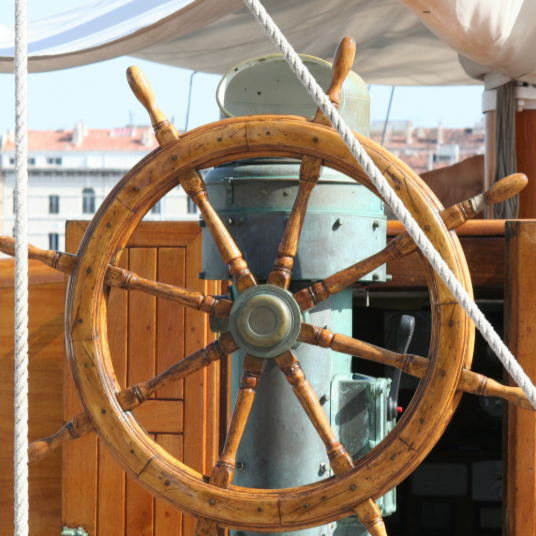
Why do we say port and starboard?
On a ship, you don’t turn left or right... you go to port or starboard. Why do we use these terms when sailing?
In practical terms, this designation eliminates any confusion, especially orders are issued, since port and starboard always remain on the same side of the ship, no matter where you are or where you are looking. Port corresponds to the left side of a boat when looking towards the bow (forward); starboard corresponds to the right side of a boat when looking towards the bow, unlike “left” and “right” which change according to the position of the seafarer.
These terms originated with Dutch sailors:
- Starboard comes from “stierboord” (“stier” meaning rudder and “boord” meaning side). At the time, the rudder on sailing vessels was a sort of paddle submerged into the water on the right-hand side of the vessel because most sailors were right-handed and held it in one hand. So “stierboord” literally means “the side of the rudder.”
- “Babord” in French and “baecbord” in Anglo-Saxon English come from the Dutch word “bakboord” (“bak/baec” meaning back and “boord/bord” meaning side). When the helmsman held the rudder, his back was to the left side of the ship. In Middle English, “baecbord” became “ladebord” with “lade” meaning load, referring to the content on the left side of the ship. “Ladebord” then became “larboard” but because there was some confusion between starboard and larboard, the British Royal Navy ordered in 1844 that port be used instead.
Over time, “stierboord” became starboard and port, first recorded in 1543 to mean the wharf-side, or opposite site of the rudder side, where vessels tied up to the dock, became standardized as the left side.
